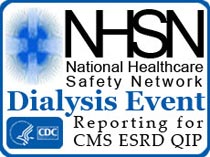Quality Performance Measures (QPM)
In 1999, the Medical Review Board (MRB) and Board of Directors (BOD) of ESRD Network 13 asked the Network staff to develop an ongoing method to measure and report on priority areas of renal patient care outcomes (anemia management, adequacy of dialysis (HD & PD), vascular access and immunization/prevention) encompassing the entire Network service area. The available National data (historically Core Indicators and now Clinical Performance Measures) activities report on the quality of care being provided to the ESRD beneficiaries. The results provided to date, argue strongly that meaningful feedback data reports are an important tool that can be used in assessing patient care processes and outcomes, as well as identifying opportunities for improvement. However, these National projects report on a percentage of patients and providers within the Network. A truly reflective facility-specific snapshot of the dialysis care provided throughout Network 13 was not available on an annual basis prior to our Quality Performance Measures (QPM) activity.
QPM is based on a combination of two separate but complimentary activities: outcomes assessment and continuous quality improvement (CQI). Outcomes assessment concerns the measurement, monitoring, and feedback of data. The role of outcomes assessment is to provide feedback of information to clinicians for their use in improving care processes. CQI is an approach to improving a process that begins with an assessment of current knowledge of the process (including comparative performance data), searches for causes of performance variation and plans for process improvement. This leads to the expectation that processes will be monitored continuously allowing for earlier, appropriate intervention application.
Adequate care of an End Stage Renal Disease (ESRD) hemodialysis patient requires vigilance towards anemia management, adequacy of dialysis therapy, the establishment and maintenance necessary for vascular access patency, and prevention of diseases as possible via immunizations. Hemodialysis therapy depends upon all of these factors, plus more. This activity focuses on:
- “Does the ESRD provider monitor anemia values in order to maintain patient population in target ranges utilized for anemia management (i.e., Hgb/Hct, EPO usage, iron usage and monitoring)?”
- “Does the ESRD provider monitor adequacy of dialysis values to provide appropriate dialysis therapy?”
- “Does the ESRD provider currently have a policy and/or protocol regarding vascular access initiation, treatment, and intervention(s) as deemed appropriate?
- “Is there an impact secondary to patient receipt of recommended immunizations on hospitalizations and/or mortality?
| 2002 QPM Report pdf-202Kb |
| 2001 QPM Report pdf-124Kb |
| 2000 QPM Report pdf-6.1Mb |







